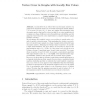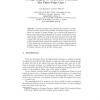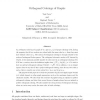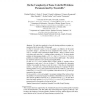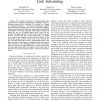69 search results - page 3 / 14 » The two possible values of the chromatic number of a random ... |
ICALP
2011
Springer
12 years 11 months ago
2011
Springer
In [13], Erd˝os et al. defined the local chromatic number of a graph as the minimum number of colors that must appear within distance 1 of a vertex. For any ∆ ≥ 2, there are ...
SIROCCO
2010
13 years 9 months ago
2010
Abstract. We study strategies that minimize the instability of a faulttolerant consensus system. More precisely, we find the strategy than minimizes the number of output changes ov...
COMBINATORICS
1999
13 years 7 months ago
1999
An orthogonal coloring of a graph G is a pair {c1, c2} of proper colorings of G, having the property that if two vertices are colored with the same color in c1, then they must hav...
COCOA
2007
Springer
14 years 1 months ago
2007
Springer
Abstract. We study the complexity of several coloring problems on graphs, parameterized by the treewidth t of the graph: (1) The list chromatic number χl(G) of a graph G is defin...
INFOCOM
2009
IEEE
14 years 2 months ago
2009
IEEE
—We consider the question of obtaining tight delay guarantees for throughout-optimal link scheduling in arbitrary topology wireless ad-hoc networks. We consider two classes of sc...
